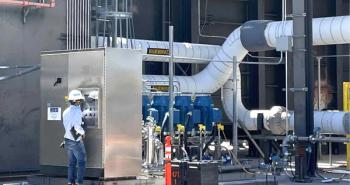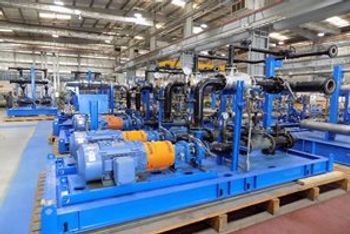
Solvanic Conducts Carbon-Capture FEED Study at Coastal Bend LNG Facility
Key Takeaways
- Solvanic's EMAR technology uses electricity for CO2 capture, reducing energy needs and CAPEX compared to traditional systems.
- Coastal Bend LNG collaborates with Solvanic to improve carbon-capture efficiency for its low-carbon LNG objectives.
The carbon-capture technology leverages an electrochemical process—CO2 is released and then captured by amines with electricity, reducing costs and energy requirements.
Solvanic started a front-end engineering and design (FEED) study for its
“We have demonstrated our EMAR solution to Technology Readiness Level 4 with low energetics, high stability, and modular scalability across emission sources,” said Dr. Michael Nitzsche, Co-Founder and Chief Technology Officer, Solvanic. “This FEED study accelerates our techno-economic analyses for gas processing and post-combustion carbon capture with the full engineering support of Coastal Bend LNG and their contractors.”
The EMAR technology utilizes an electrochemical process that releases amine-captured CO2 with electricity, as opposed to the high-temperature steam of typical thermal amine systems. By deploying an EMAR system, Solvanic can minimize the energy requirements and CAPEX for carbon-capture applications. It also allows increased flexibility across operating conditions and process scales.
“To deliver on our ambitious low-carbon intensity LNG goals, we need to capture CO2 emissions from both our natural gas pretreatment and cogeneration facilities,” said Nick Flores, Chief Executive Officer, Coastal Bend LNG. “For post-combustion capture on our onsite cogeneration facilities, we need a step change in carbon-capture efficiency. We’re encouraged by Solvanic’s preliminary techno-economics and are keen to accelerate their technology readiness with this FEED study.”
Initially developed by Professor T. Alan Hatton’s research group at the Massachusetts Institute of Technology (MIT) Department of Chemical Engineering, Solvanic obtained an option agreement to use the EMAR system for Coastal Bend LNG. Dr. Michael Massen-Hane and Dr. Nitzsche have made several emissions-reducing breakthroughs over the last decade and co-founded Solvanic to upscale the technology and maximize climate impacts.
“We are leveraging over a decade of electrochemical carbon-capture research and development at MIT via this option agreement,” said Dr. Massen-Hane. “We appreciate Coastal Bend LNG’s confidence in the technology to meet their industrial decarbonization objectives.”
Coastal Bend LNG Liquefaction
Coastal Bend LNG, a planned 22.5 MTPA natural gas liquefaction and export facility in Ingleside, TX, will use
ConocoPhillips’ proprietary liquefaction technology recovers heavy hydrocarbons to utilize as a separate product, which prevents freezing and may also remove nitrogen if necessary. Optimized Cascade leverages three multi-staged, cascaded refrigerant circuits, brazed aluminum heat exchangers, and insulated cold box modules to effectively liquefy natural gas, while the company’s installation method reduces cost and increases the LNG plant’s efficiency.
The company optimized its heat integration to closely border the natural gas and pure refrigerant cooling curves, resulting in little overall waste. It uses propane, ethylene, and methane, as their physical characteristics apply well to heat integration and their properties are thoroughly documented. Utilizing well-known pure refrigerants enables operational simplicity and flexibility.
The brazed aluminum heat exchangers and cold box modules can be up- or down-scaled to accommodate various LNG plant sizes; also, depending on the natural gas feed stream composition, the LNG train can feature an integrated heavies removal unit (HRU) and/or a nitrogen rejection unit (NRU). The HRU and NRU can help achieve the desired LNG plant performance and meet economic targets.
Newsletter
Power your knowledge with the latest in turbine technology, engineering advances, and energy solutions—subscribe to Turbomachinery International today.





